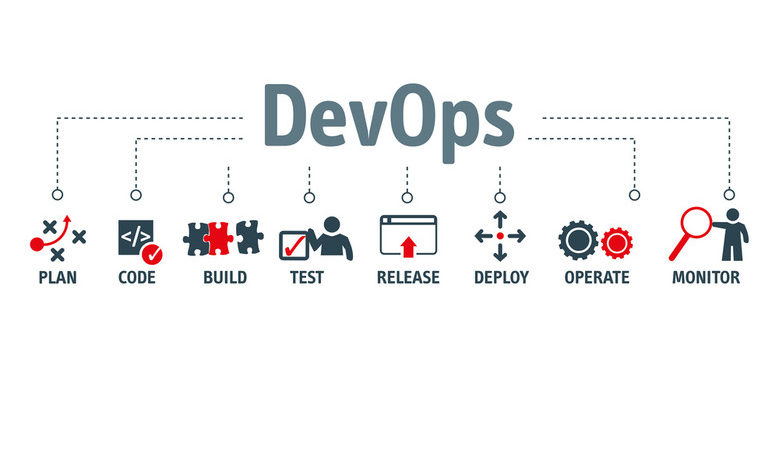Desktop-as-a-Service (DaaS) — what is it? To use Tech Target’s definition: DaaS is a cloud computing offering in which a third party hosts the back end of a virtual desktop infrastructure (VDI) deployment.
In this article, Desktop-as-a-Service: The new frontier for end user computing, we put the argument forward that the demand for DaaS was increasing due to a number of market drivers. Which ones? Well, you’ll just have to read the piece.
What was not included in the above mentioned article, however, was use cases. Why should your business 0r institution look to embrace DaaS? The ‘tag line’ is that it will help free up your respective IT teams, by allowing them to focus on innovating rather than constantly updating and fixing niggling computer issues.
But, this needs to be seen in action.
Below, are two case studies that can help demonstrate the impact of DaaS. And hopefully, there will be some parallels that can be drawn to your business.
What is digital transformation in business: Everything you need to know
1. Toppan Merrill
Toppan Merrill is a $14 billion Japanese-owned printing company, headquartered in New York. The organisation made a substantial investment in new virtual desktop and back-end IT infrastructure to support business growth through strategic acquisitions.
After a number of acquisitions, the organisation effectively doubled in size, and this is why it invested in VDI and IGEL endpoint solutions.
Thomas Mangan, Toppan Merrill’s vice president, Information Technology and Production Design, commented, “To reduce complexity and eliminate the need for 24/7 IT staff support, we’ve always used virtualised desktops; we just didn’t want traditional PCs and multiple endpoints to manage. However, our previous thin client solution was inadequate as the software was difficult to use and limited to a single display protocol. With so many systems and people coming over with the first Vintage Group acquisition, we needed to scale up and find a better and easier to manage desktop solution for our HQ and remote sites.”
Following the acquisition, Toppan Merrill standardised on IGEL technology following a demonstration where it saw the capabilities of IGEL’s Universal Management Suite (UMS) software which enables the whole endpoint infrastructure to be centrally managed.
Today, around 150 UD3 multimedia endpoints have been deployed along with Citrix XenDesktop all running on Nutanix hyperconverged infrastructure. IGEL Cloud Gateway was purchased to manage and provide access to endpoints located at its branch offices. Furthermore, IGEL’s UD Pocket solution is being used which enables IT staff to temporarily repurpose any 64-bit x86 laptop. The UD Pocket – which is the size of a few paper clips – simply plugs into a USB slot and after “booting to USB” enables the device to run IGEL’s Linux OS. This provides access to Citrix and their own desktop session without an actual UD3 terminal having to be used.
IGEL provides a comprehensive enterprise desktop solution
In addition, IGEL was selected for a range of other reasons:
• Support for multiple virtualisation protocols. This allows Toppan Merrill to manage two environments: its existing legacy VMware Horizon View platform along with the new Citrix XenDesktop and Nutanix infrastructure so that some staff – particularly the Mail and Data Team who look after variable print mailings – can still access core business applications such as BCC software and Planet Press Connect from Objectif Lune. “Because of licensing and legacy configurations, it was going to be risky to move off VMware Horizon View completely. Instead, we found a solution in IGEL that supports multiple display protocols so that staff can toggle back and forth between the two environments, seamlessly,” explained Mangan.
• Ability to run multiple displays from the UD3 endpoints. All production staff have multiple screens so they can hop between applications yet keep everything open. New Dell screens have been provided for them with existing ones re-used for sales and other business areas where resolution isn’t so important. “Multiple screens allow us to not only work on regular production jobs but monitor email inboxes for client requests or anything that might shift the priority of jobs,” continued Mangan.
• Provision of tailored desktops based on job role. When a user logs in, and it doesn’t matter which endpoint they sit at, they get a tailored and personalised desktop based on their location – this is important as Toppan Merrill is a 24/7 operation and runs three daily shifts with staff sharing desks. Employees in New York and Denver log into Citrix-based desktops, with those in New Jersey given the option to choose between Citrix or VMware based on the software they need to access. These policies are managed within the UMS along with other features:
• Shadow policies. This allows an administrator to shadow a user’s screen to troubleshoot any issues with the virtual desktop. It means no plug-ins or complex help desk software is required.
• Network policies. Toppan Merrill has various physical networks and different groups get different network access. “Depending on what network an IGEL endpoint is linked to a completely different profile is applied. And in the event a device has to be replaced, all we have to do is disconnect it, plug in a new one in and in minutes, the user is back up and running,” added Mangan.
Easy roll out
The installation of the whole IGEL solution was completed quickly. In New Jersey and New York, endpoints were implemented over a weekend. The IGELs were powered on and the profiles sent to the devices over the network with each one then tested. “We worked with IGEL’s software engineers to create our policies, then plugged the UD3s into power and our network, the UMS discovered them and did the rest for us. It was remarkably easy,” said Mangan.
“The UMS is the management console we’d always hoped to find but didn’t get with our previous supplier. That’s why we switched to IGEL. I can’t say enough good things about it and, even though our fleet of UD3s isn’t in the thousands, it’s of fundamental benefit. We define a policy and drag and drop this to individual IGEL devices or groups of installed endpoints, with firmware updates simplified too.”
A platform for growth
Moving forward, as the business continues to expand, it is easy to incorporate new users into the overall corporate architecture. David Henkel, Toppan Merrill’s VP and chief technology officer, commented: “While it is early days with the integration of the Merrill divisions into the business, our new VDI architecture could easily be extended and we’ll be working on this over time. Ultimately, Toppan Merrill will be known globally as Toppan Merrill, reflecting our organisation’s scale and enhanced offerings.”
Jed Ayres, President and CEO, IGEL North America, says, “Toppan [Merrills] senior management put a lot of trust in its IT team given they’ve completely changed their desktop infrastructure. It’s the strength of IGEL’s technology, combined with Citrix and Nutanix solutions, that has facilitated this. VDI with the right endpoints and right endpoint security and optimisation software provides everyone in the company with a first-class work environment.”
2. Ayrshire College
A £53 million campus at Ayrshire College received a modern VDI platform and IGEL technology to deliver a truly flexible learning environment.
Built on the site of a former Johnnie Walker whisky bottling plant, the land for the 10-acre campus was gifted to the College by Diageo to help regenerate the area and is now home to 338 staff and 5,500 students who study over 100 courses. The new campus was officially opened in December 2016 by Scotland’s First Minister, Nicola Sturgeon, and is one of three main campus locations operated by the College.
Brad Johnstone, Ayrshire College’s head of ICT, said: “A modern building needs modern technology which supports and enhances the students learning experience. Installing traditional desktop PCs was initially considered but rejected as it didn’t give the freedom or flexibility for students to work. Instead, we’ve invested in a Citrix XenDesktop VDI platform to create an environment where students can log in from wherever they are to access their own personal desktop profile and applications.”
Ayrshire College has purchased IGEL multimedia UD3 thin client terminals for 12 classrooms and Universal Desktop Convertor (UDC) software to run on 400 new laptops. This converts any x86 device into a universally deployable IGEL Linux-based thin client.
VDI: Changing the way subjects are taught
The use of VDI and IGEL thin clients is radically changing the way the College operates at Kilmarnock. Previously, applications were loaded onto computers in dedicated laboratories or classrooms subject to the curriculum requirements per course. If timetabling changed, software would have to be then added or removed which was a time-consuming overhead for the onsite IT team of six.
David Keenan, Ayrshire College’s ICT team leader, said: “Citrix has empowered us to move away from this with the software each student requires served up when they login. This means the classroom setting becomes irrelevant and we can use our space much more productively introducing IT to areas which didn‘t have it before.”
For example, students studying for an HND in Beauty can now bring a laptop into a salon and work on a presentation or type up their notes. Previously IT wasn’t available in these learning spaces and they would have to go elsewhere such as the Learning Resource Centre.”
Furthermore, this approach means that Ayrshire College can respond quickly to the local economy it serves by preparing students for work. Johnstone explains “If an airline decided to boost flights to our local airport at Prestwick, we could introduce new aeronautical courses and train people locally to do the jobs. Having a responsive and flexibility IT back-end means we can be nimble to local needs.”
Thin client technology in education
Ayrshire College has taken advantage of IGEL’s UDC software and loaded it onto 400 laptops to convert them into thin clients. These are stored in twenty rooms — called IT enabled labs — which have 20 laptops each housed in two cabinets. A lecturer has the keys to the cabinets and controls lending the laptops to students so they can do group work, research, theory and so on.
Furthermore, by converting laptops into thin clients, applications start up quicker and battery life has been boosted such that a full teaching day can be delivered from a single charge.
“Students love the new system. In the old Kilmarnock Campus, some of the PCs were nearing end-of-life and were about to be decommissioned. Now everything is a lot quicker and the students get the same experience irrespective of the device. This means they can jump from one to another and it’s the same experience. And if there is an actual rare unit failure, they don’t lose work as their data is stored on our central servers,” said Keenan.
The Kilmarnock Campus is phase one of the approach to deliver IT flexibility throughout Ayrshire College. Based on its success, the aspiration — subject to funding — is to introduce Citrix and IGEL across not only the three campus sites, but additional satellite locations which offer courses such as motor vehicles and horticulture, so that all students are given the software they need when, where and how they want it.
“Our job is get students ready to go to university, into employment or wherever they aspire to be in their lives. Delivery of the right IT tools and software is integral to this. If some-one wants to use AutoCAD on an iPad at 3am in the morning – because that’s their optimum work time – so be it, we have the infrastructure in place,” explains Johnstone.
Andy Gee, IGEL’s VP Sales Northern Europe, commented: “Ayrshire now has a desktop solution in place at Kilmarnock to really deliver and technology which can be developed throughout the College. IT staff will now be engaging with students and teaching staff to work out precisely what this means so that it can harness the power of a combined Citrix and IGEL solution even more.”







